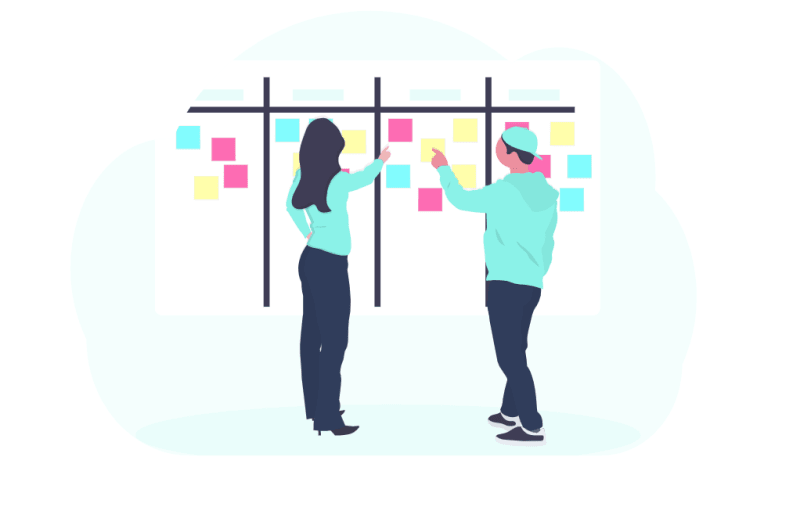Yo yo yo, it’s me Kim and I’m here for my first ever techie blog post!
Here are my top 5 hacks for bridging business and technology:
Hack #1 Assess what ‘value’ means to different people
’Value’ means different things to different people, so it’s important to establish a shared goal and vision in a way that everyone can understand.
Try to imagine yourself as a software developer, end-user, project manager, business stakeholder and investor etc. All of these people place emphasis on various types of things. Whilst the investor might be looking at the payback period from initial investment; the developer may be focusing on technology feasibility, executing designs and how data flows work for example. The end-user on the other hand may be drawn to ease of use and a fantastic user experience.
Something as simple as tweaking the use of language from ‘I’ to ‘We’ creates a team mentality where everyone participates. At the end of the day, there will be trade-offs, but that’s ok as long as everyone is focused on a shared goal.
Hack #2 Recognise that technology can’t solve everything
Technology is far from perfect! That’s why it’s absolutely fine to feel frustrated when something doesn’t work out according to plan.
The best solutions are those which blend technology and people; reminding us of the importance of the ‘human’ in technology.
Hack #3 Don’t focus too much on getting a perfect Agile software & product development process. Communication is the key!
Agile is commonplace nowadays and its popularity owing to business requirements to react quickly to changing ideas and concepts across young and growing industries. However, many teams get bogged down by the Agile software & product development process itself. It is natural for teams to create extra structures around Agile in an attempt to have some control and seek reassurance from what is an inherently fast-paced process. Relevant documentation is important in Agile software & product development, but too much irrelevant documentation can be overwhelming and not so useful, the opposite of what Agile is all about. I experienced this myself when I spent a little bit too long perfecting my presentation and doing tweaks here and there at the expense of actually speaking to someone in the first place! When I found the courage to draw a line under my work and take action, it was way more effective. This might seem mind-numbingly obvious, but in practice we all need to be constantly reminded.
In truth, Agile does not look the same across organisations. The idea here is to look beyond agile and focus on the people. As I mentioned earlier in Hack #2, the best solutions are those which blend technology and people.
Communication doesn’t necessary mean talking until the sun goes down; but being mindful of the context to spark a conversation to bring different personalities and working styles together. This means creating the space for ideas to be fleshed out and enabling everyone to verbalise their thoughts in written and spoken forms.
Personally, this is something I have been focusing on, as I can be quick to share my ideas. I want to be mindful about what I say and when I say things. The world can be quick to idealise extroverts, but introverts need to be heard too! Definitely, check out Susan Cain’s book, ‘Quiet: The Power of Introverts in a World That Can't Stop Talking’, if you haven’t done so already.
Hack #4 Don’t strive for perfection; embrace successes and failures
This is a hard one I know! As a perfectionist myself, this is something I’m getting better at day-by-day. Successes are without failures; they go hand-in-hand. Identify successes and celebrate them with your team. I absolutely love emojis and using Slack which is a team messaging platform to say ‘thank you’ and mention successes. You can create your own emojis to personalise things even more! In the same vain, it is cool to talk about failures too, be open about them and take forward key learnings. A good example is the ‘sprint retrospective’ which is a great way for development teams to reflect on: what went well; what didn’t go so well and how the team can improve next time.
Defining what success means and mapping onto goals is crucial. Something which may appear impossible, might just need breaking down into bitesize chunks. Setting ambitious goals are great, but ensure they’re realistic and achievable. At the end of the day, success is what you make of it.
Hack #5 Get a team plushie! Live out mindfulness & fun as a team!
We’re all humans and not robots, so don’t take things too seriously. Having mindfulness and fun as a team means respecting each other, having humility and looking beyond the status quo by challenging others in a positive and thoughtful way. Positive teams are those where positive thinking manifests itself within human interactions. Seriously, everyone loves a plushie to brighten up their day!
That concludes my first blog post on business-technology hacks. I could go on for quite a while, so let’s take it to the floor to hear some of your hacks.
Thanks to undraw for providing the awesome images used in this blog post.
Byeeeeeeee,
Kim







Top comments (2)
Hack #2 is the one that stands out the most to me. Too many times I've seen peers (myself included) dedicate a hefty amount of time to implementing technology into a solution just to end up realizing it wasn't going to work.
As much as we'd love to solve every single issue with a few lines of code, sometimes it just isn't the viable solution.
I feel the exact same way. Sometimes, even if I know it's possible to just talk to someone about things; once I get stuck into one avenue, I just want to pursue it :) I found myself taking more breaks to force myself to think about other solutions and weigh up pros and cons of each one. However, sometimes you don't know unless you try :)